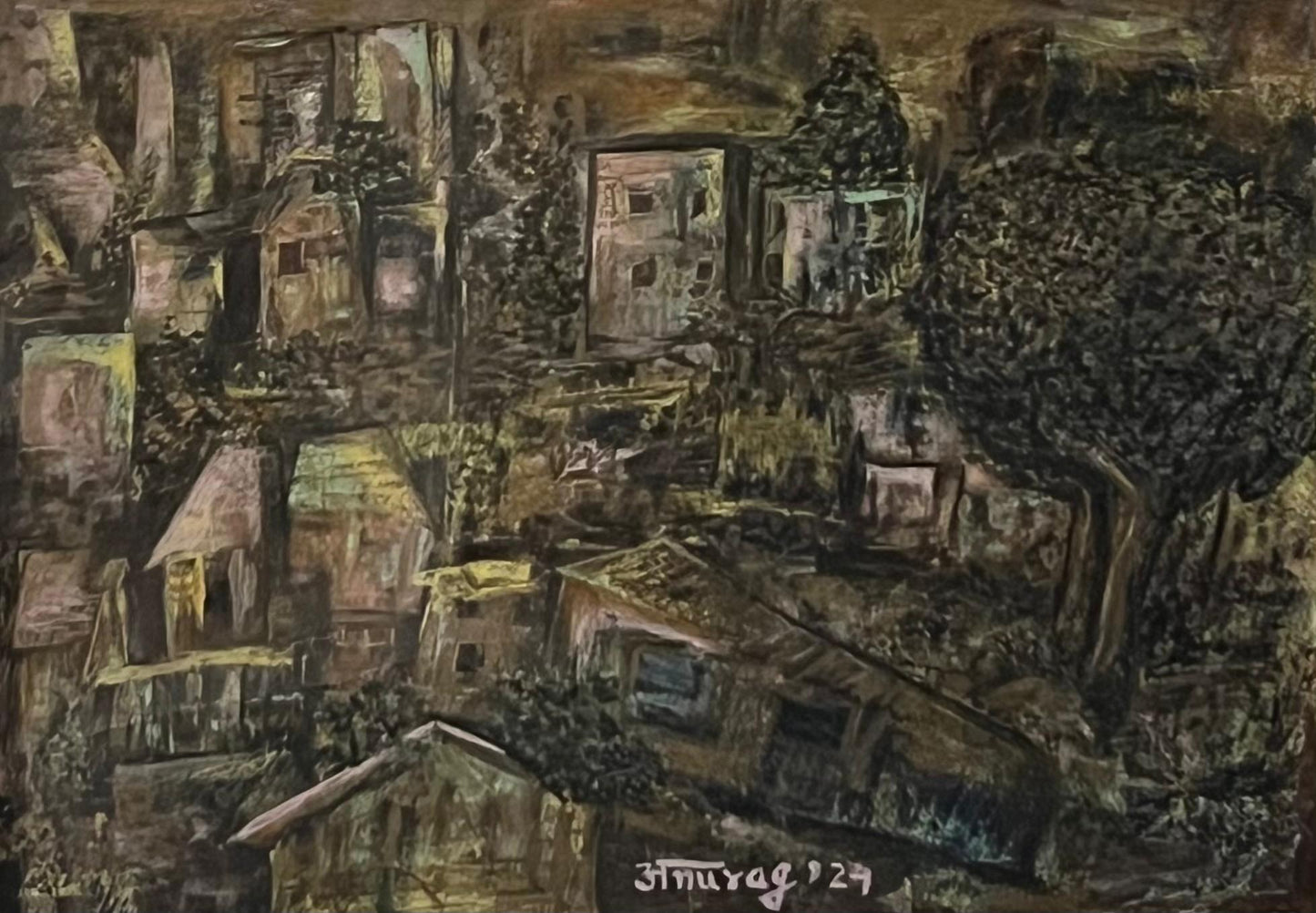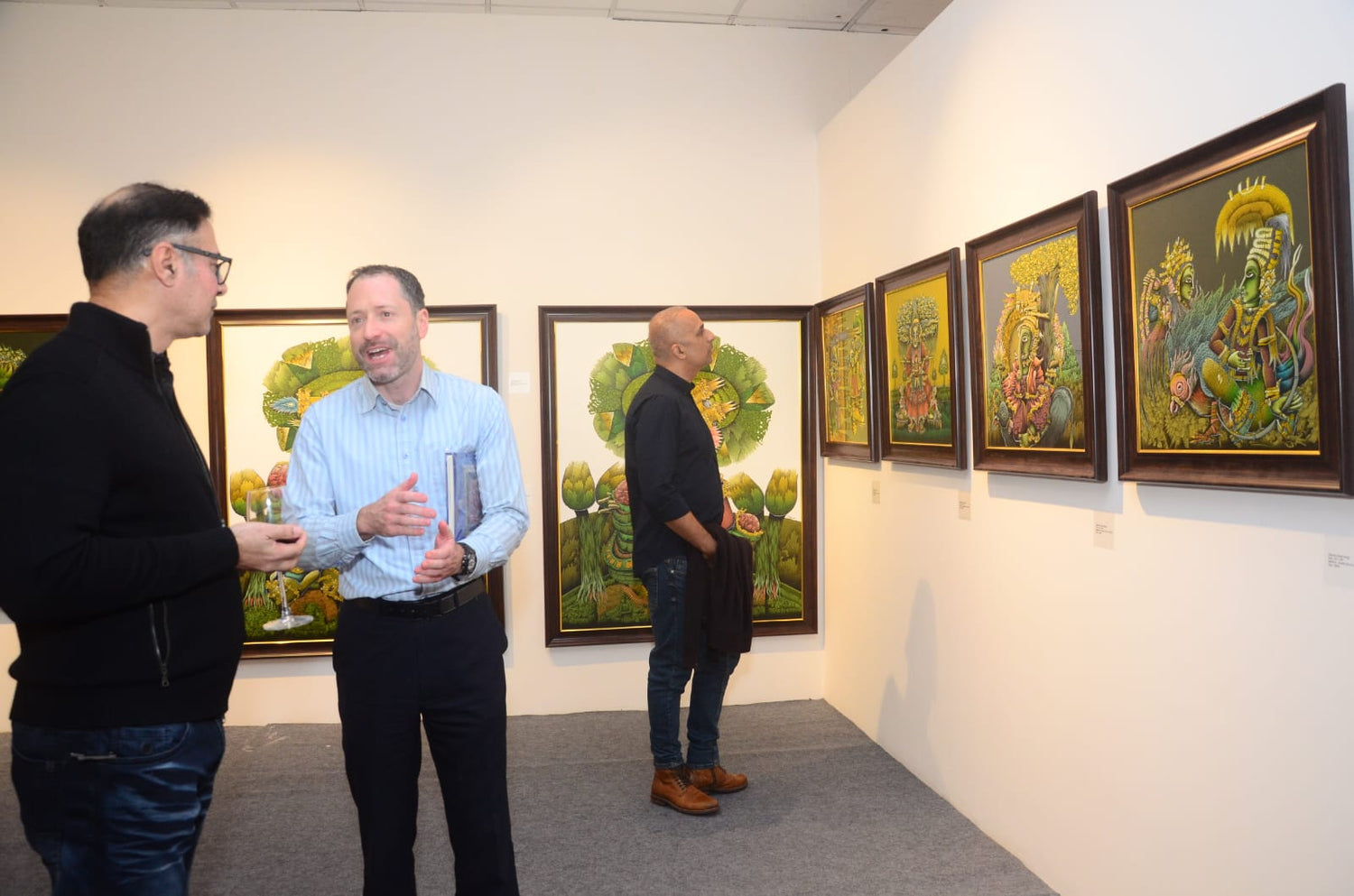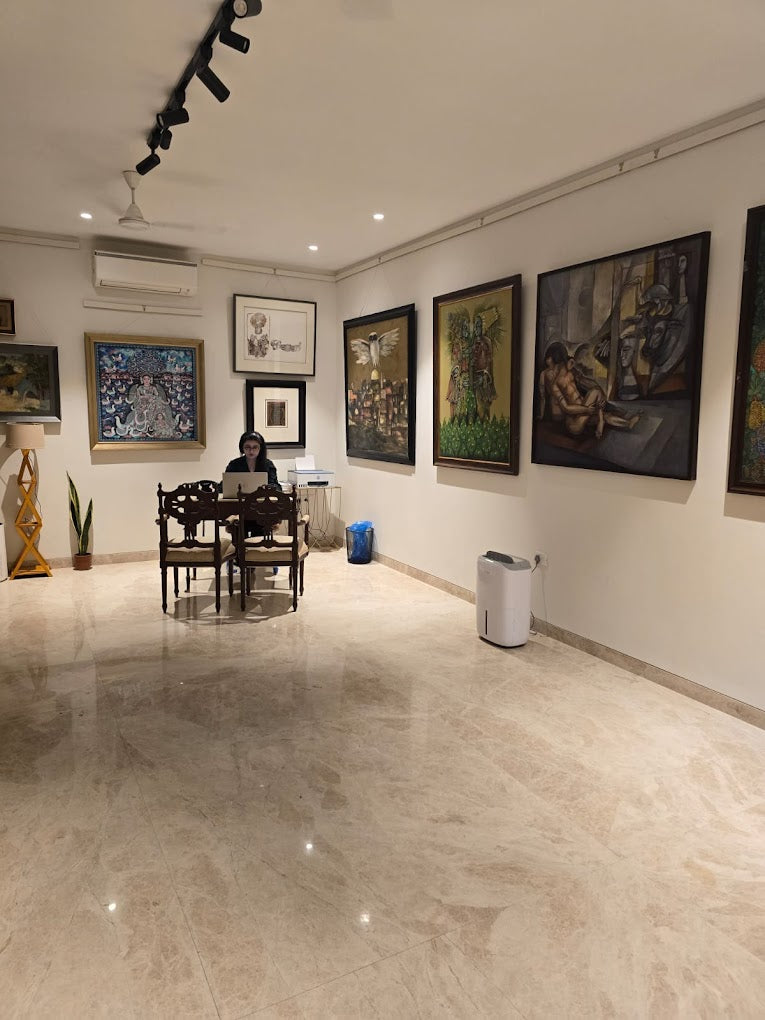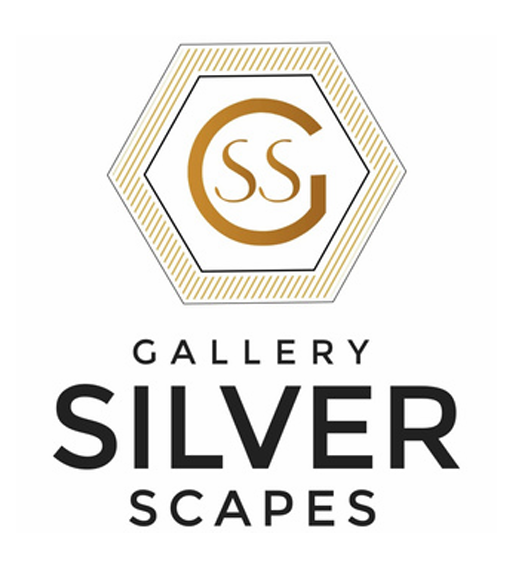Gallery Silver Scpaes
Untitled
Untitled
Couldn't load pickup availability
Artist: Anurag Anand
Medium: Mix Media on Paper
Size: 12 x 16 inches (30.48 × 40.64 cm)
Year: 2024
This evocative painting presents a densely clustered settlement, rendered with a blend of impressionistic sensitivity and cubist distortion. The composition is a layered meditation on memory, place, and the fragility of human habitation. Shadows dominate the scene, casting a veil of mystery over the village-like forms, while fragmented architecture and tilted planes subtly disorient the viewer’s sense of perspective and space. The artist’s use of earthy, muted tones, ochres, deep grays, siennas, and charcoal blacks, imbues the canvas with a mood of quiet desolation. These subdued hues create a heavy atmosphere, as if the scene exists in the aftermath of time, its inhabitants long gone or hidden within its depths. Yet the painting avoids complete darkness; gentle highlights of pale pinks and yellow-greens emerge from corners and crevices, offering brief, almost hesitant glimpses of lingering life and light.
Formally, the painting combines impressionistic brushwork with cubist fragmentation, allowing architecture to bend, collapse, and merge with the surrounding landscape. The edges of buildings blur into one another; walls dissolve into skies; windows appear and vanish with shifting tonal layers. This interplay between solidity and dissolution adds rich ambiguity, challenging viewers to see not just a place, but a memory of a place, something partial, fragmented, and emotionally charged. The texture of the paint further enhances this sense of memory and erosion. Varied applications, from broad, dry-brush sweeps to denser, textured passages, create a layered surface that feels aged and weathered. Each mark contributes to the illusion of time having passed, of structures standing both in and out of the present.
Symbolically, the work speaks to the vulnerability of human habitation. The village becomes more than a geographic space; it transforms into a vessel for themes of abandonment, transience, and the delicate line between permanence and decay. The overall effect is contemplative, even haunting, as viewers are drawn into a psychological as much as physical landscape. Painting is a compelling example of expressive abstraction grounded in architectural form. It resists narrative in the traditional sense, opting instead to convey emotion through spatial ambiguity, tonal restraint, and formal experimentation. It asks not what we see, but what we remember—and in that question, it finds its enduring power.


Why Choose Us
Art has always, naturally, reflected the development and exploration of different thoughts and perceptions, and our current postmodern era is no different. It is interesting to see how art has evolved visually, yet the traditional methods of composing art remain a valid means of expression.
All it takes for an artist to rise above normalcy, is inspiration, which fuels his passion to paint beautiful creations throughout his life.
The valuable expression of art is always there with us, but now this expression is yet to take an interesting diversion with our art gallery, Gallery Silver Scapes, located in Hauz Khas Enclave. Art is no longer considered just decorative but has evolved and come forth as a major form of investment yielding high rates of returns for its buyers, making it an expression commonly used.

Mrs Mayor was walked into the art world by the legendary modernist Bimal Das Gupta, one of whose biggest collections remains with Gallery Silver Scapes. In the 1980s, as head and first curator of the Habiart Gallery founded by Mrs Rekha Modi — a childhood friend — Mrs Mayor worked closely with and curated shows for renowned artists such as A Ramachandran, GR Santosh, Rameshwar Broota, Sakti Burman, MK Bardhan, Dhiraj Chaudhury, M Sivanesan, and Arup Das among others.
Besides modern masters, she also worked with young contemporaries such as Sudip Roy, Paresh Maity, Subroto Kundu, Vinod Sharma, and many more. Artworks commissioned by her are now part of prestigious collections, such as those of the India Habitat Centre, Ranbaxy, Pepsi, Hotel Lalit, Bank of America, and many more private and public collections.


